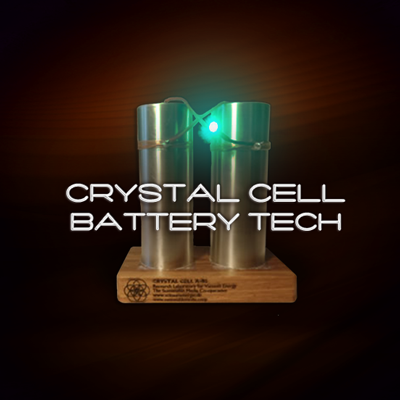The emission free Crystal Cell can generate a direct electric current over an unknown period of time (since 1999).
R and D Investment over 2 years : 2.5 M USD
Complete detailed Ex Summary available on request
Profit Potential
One market segment is to replace batteries for many applications such as flashlights, pocket
computers, digital scales, toys, clocks, measuring equipment, radios, mobile telephones, electric
locks, organizers, technologies within the medical area, i.e. medical devices, etc.
In the UK the regular price of non-rechargeable batteries (Size AA) is approx. 1 £ and a
rechargeable battery of the same size is up to 20 £ each. Since the Crystal Cell is a permanent
energy source it will outperform the rechargeable ones, we assume a price of 5 £ each.
In addition we will sell licences for manufacturing the Crystal Cell.
The next application goal is to provide houses with energy. An average 1 person household in
Germany consumes appox: 7 000 kilowatt hours of electric energy per year. (100 £ per month,
including electricity, warm-water and heating).
One Crystal Cell block of 1,5 - 2 cubic meters could deliver 1000 Watts continuously. This is
enough for an average 1 person household. If additional energy is needed (e.g. when cooking), it
could be drawn from capacitors or rechargeable batteries, that are chared when little or no energy
is used.
The installation costs for an oil or gas heating system is approx. 10,000 £ depending on local
conditions. For a 3 person household a licensee could get a Crystal Cell block for a one-time fee of
5,000 £ and in addition a yearly charge of 800 £.
We anticipate that once the public has recognized using a Crystal Cell block technology is less
expensive than other energy sources and is emission free, the market could explode within a short
time.
Research strategy
Research in the past has shown, that the majority of the generated electric energy from a CC does
not seem to be created by electrochemical effects or by the conversion of environmental heat.
It is our intention to further verify the precise working principal from current hypothesis and to then
develop a prototype which is economically viable.
To reach this goal, the Research Laboratory for Vacuum Energy will perform three parallel
research efforts. Two research efforts shall deliver the necessary foundations from the silicate and
nanotechnology research and the third research effort will create a simulation of the working
principal based upon these foundations.
The first research effort relates to the identification of the active material/materials and the
development of this silicate or other nano-materials in pure form with the aim to increase the power
output of the Crystal Cell as it is currently built.
The second research effort relates to the development of nanocrystals that are made in nanolayers.
The next generation Crystal Cell will be a thin capacitor like sandwich, that include non selfsymmetrizing
oscillating silicate molecules. This oscillation will be controlled and forced into
coherence by an external trigger signal. This will lead to a significant increase in power output with
the final goal to supply all energetic applications with Crystal Cell´s.
The third research effort relates to the complete simulation of the hypothesis. The interactive
oscillation of the silicates and the controlling of the coherence will be simulated with the aim to find
more effective nano-materials in a short time.

